REVIEW : "Black Narcissus" (1947) - Movie by Michael Powell & Emeric Pressburger
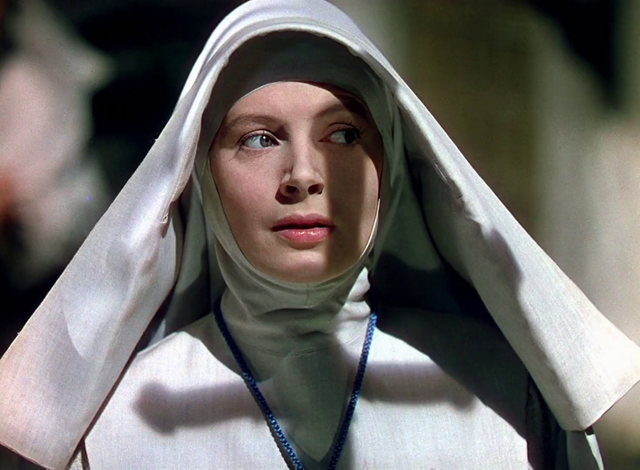
The history of colour in movies is a bit of a complicated one. Colorised film is almost as old as the film media itself and a good example of a very early colourised movie is "King Of Jazz" from 1930. But it was not really until the late 1930´s and 1940´s that it really broke through to the mainstream so to say. But when it did ... oh boy what marvellous spectacles would appear. One such ambitious spectacle is "Black Narcissus" from 1947.
I am no expert in the various colour technologies developed over these decades so I just use the catch-all term Technicolor. There is just something unique about experiencing these early colour movies. They are not precisely true to "nature" but have this warm, pastel- and glittery tone, that I suppose to some extend was deliberate, which gives them a wholly unique feel.
A media that only a good decade before struggled with incorporating sound into the media, is now a fully formed audio/colourvisual experience that must have blown most peoples minds back then. Looking at some of these movies now still thrills me, so I can only imagine the effect they must have had on audiences some 70 odd years ago
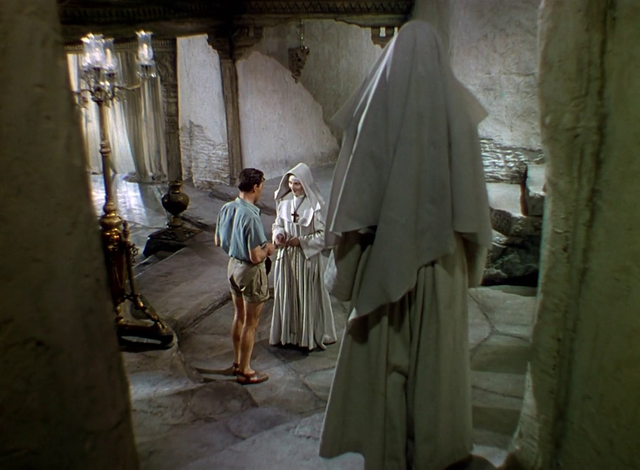
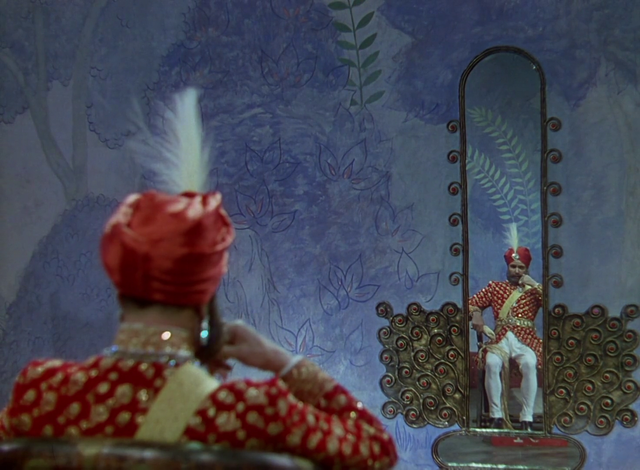
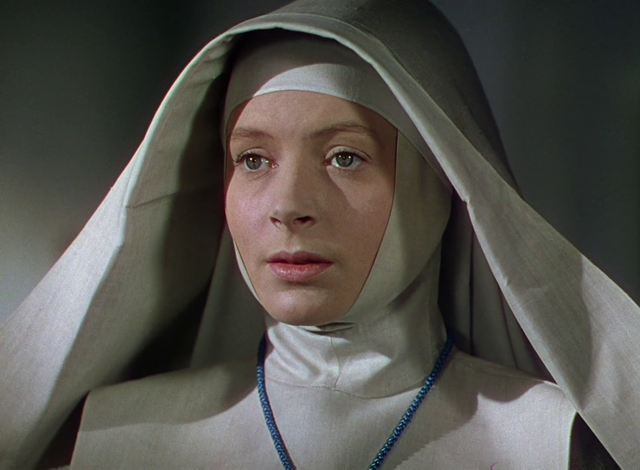
An interesting aspect also is that this is not a Hollywood production but an English one. After the Second World War, there seems to be a surge in English movie making, not too unlike the surge in Germany after the First World War. During both wars, the American filmmakers had sprinted in front of practically every other in the world. Everyone looked to America as both the "savers" of the world wars and the savers of cinema. The likes of Francois Truffaut became an avid fan of American movies due the opening up of foreign movies in France after the war and since 95% of what was around was American, it was almost set in stone. But not quite.
My personal explanation of this British surge in cinema, lies in the fact that the uptightness following the end of the roaring twenties via the bank crash and a build up emotional tension extended by years of war, is a postponed need for expression that should probably have happened 15 or 20 years before.
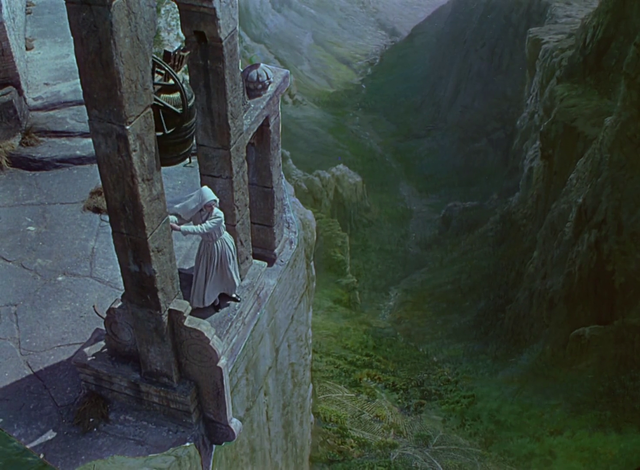
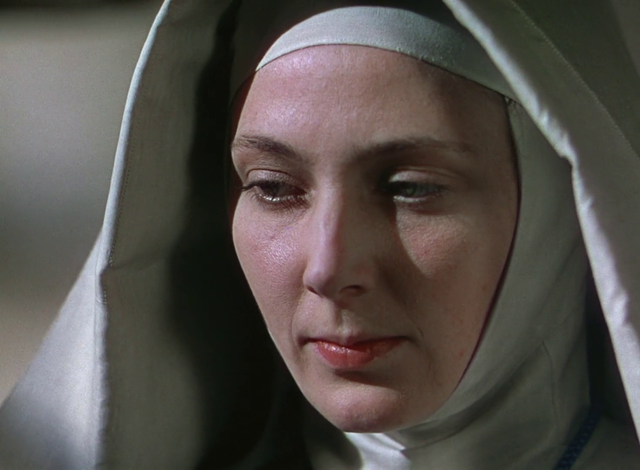
The plot (or the overlying "excuse" for the film) is a "monastery" in Himalayan India, which is reoccupied by a group of nuns from an English mission. The local Rajah has offered the mission to set up a school and hospital in this place, to help the local population. But it which was actually originally his fathers brothel, housing his harem. The murals, that are still on the walls inside, show this without ambivalence.
Sister Clodagh is offered to lead the project and is appointed some other sisters of particular complimentary skills, so that success of the project should be more secure. But there are some slight problems from the start. There is a very handsome practical helper appointed by the Rajah, mr. Dean, who is quite overtly flirty with the uptight nuns. Clodagh and her "fellow" sister Ruth both slowly start to get the hots for him. He generally has a pessimistic and nihilistic attitude that both attracts and repels the nuns.
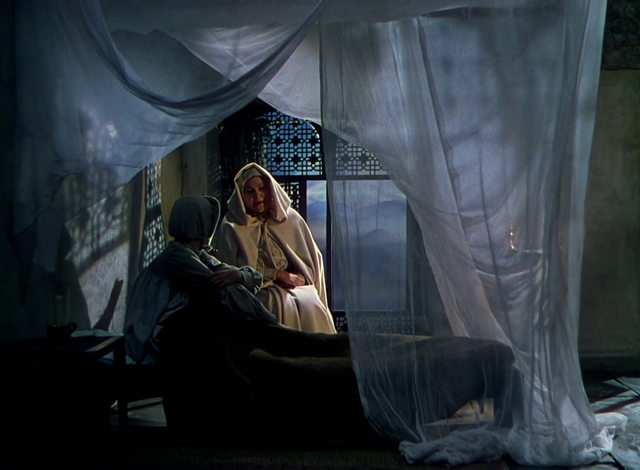
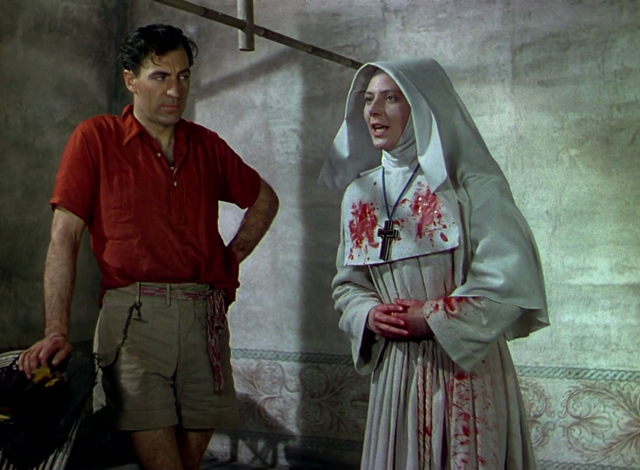
And as time goes by, the various responsibilities of the nuns are neglected either due to sickness or deliberate disobeying of plans to suit own ideals. Eventually it seems that it is only a question of time before everything will come apart at the seems. The growing jealousy between the sister superior and Sister Ruth finally blows up as she rejects her status and returns almost as a female shapeshifter into a wild, "horny" (devilish) seductress, who was immediate gratification of sex from Mr. Dean who she believes fancies her..
She seeks him out down in his "cabin" in the dark and humid swamps, but he rejects her claiming that he never made any attempt at "wooing" her. When pressed, he states that he loves no one. Her wild sexual passion turns to furious hate towards Sister Clodagh and she seeks her out back at the Monastery. The end of this will be fatal for one of them and for the future of the Monastery.
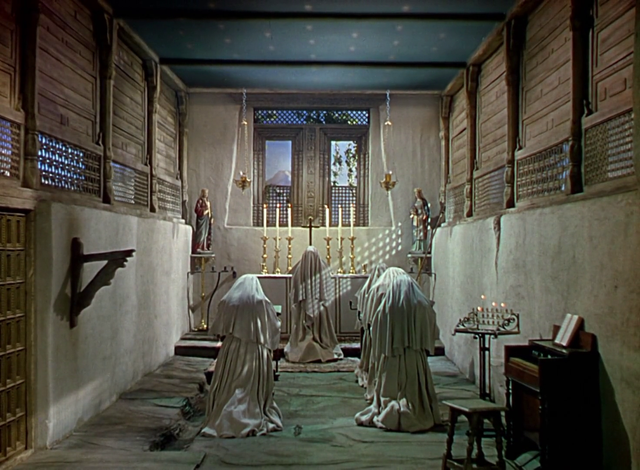

Basically every scene in this movie is drenched in erotic connotations and mood. If it is not an obvious fallic symbol it is a wink of the eye, a bare upper body, a wiggle of the hip and so on. I would not exactly say that it is a vulgar movie, but it is not far off. The genius of the setting is that it takes place in an old brothel, so various effects can be excused for being there while they at the same time serve as pointers towards sexual desires.
Some of them are extremely bold, like the mirrors shaped like a giant penis or vagina. Lesser obvious are out of focus handles or such that has fallic nature. Then there are obvious hints like the shadow of a cross that falls on the face of Sister Clodagh in the shape of a penis hitting her in one eye. It is very well crafted as it mostly works subconsciously and that is off course the whole point.
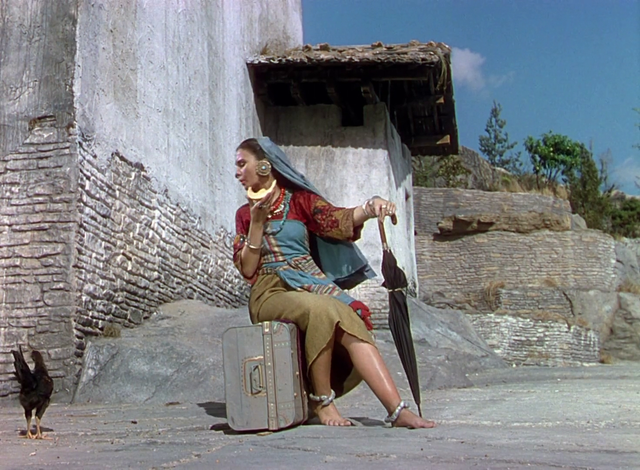
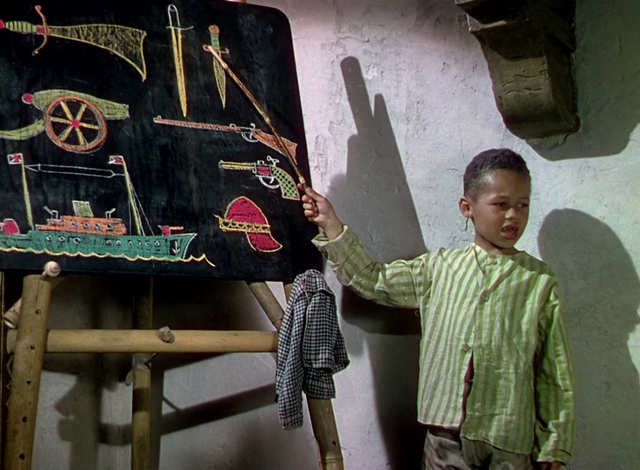
But as well crafted and suspenseful the erotic "story" is, the underlying stories are even more interesting. or at least hey are to me. There is the obvious parallels to the English Empire crumbling and trying to get things back together to "control" their minions once again, before they gain independence. This would happen for India within the same year. Even if they try with a bit of missioning and female "intuition" the times are up for India and the Empire in general.
And off course there is a home market of giving British women some "hot sex" on screen to lure them into the theatres. There was a rise of "independent" women, due to men dying in the battlefields in the war, and a welfare rise of the amount of money women could spend on "fun" in one form or another. Basically this movie is a 1940s version of 50 Shades Of Grey.
The most interesting aspects though, to me, are the political, the philosophical and what we could term the"war of the sexes". These are not very well understood here in my opinion since most has probably forgotten what actually happened to Britain after the war was one and a new peacetime government was due.
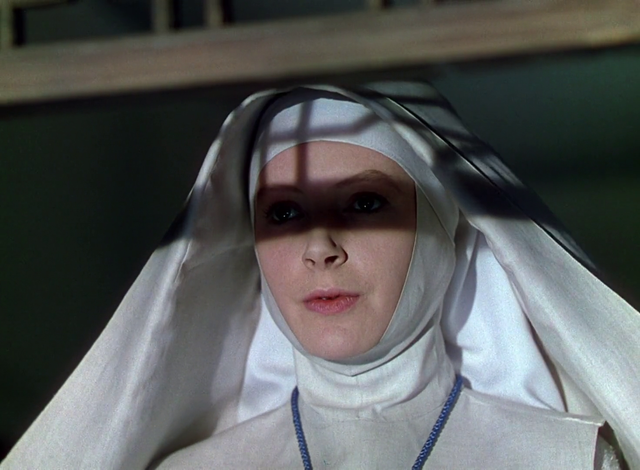
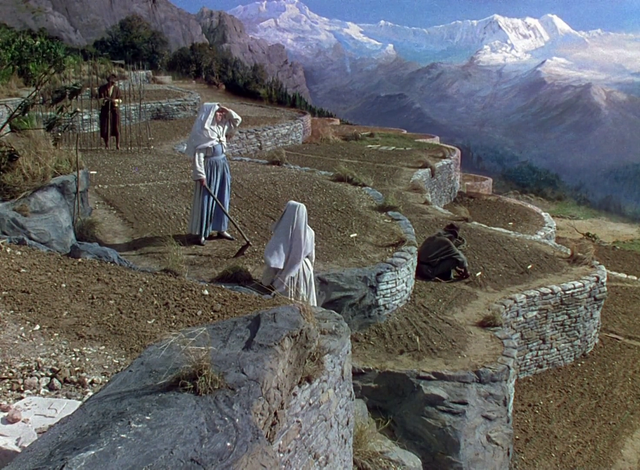
The situation naturally was that thousands of men were killed in the war or disabled in some way. Children had become orphan and women widowed and so on. There was a huge majority of female voters left back in Britain and off course they voted for more welfare. Thus what the British got when they came home from the war, was the socialism they had fought to the death to subdue overseas.
The irony is that Britain became the breeding ground for the second wave of feminism, culminating sometime in the sixties and seventies. It was already set in stone in the mid 40s when conservatisms was sidetracked to give way for socialism, feminism and welfare state (Just watch Ken Loach´s movie The Spirit of 45)
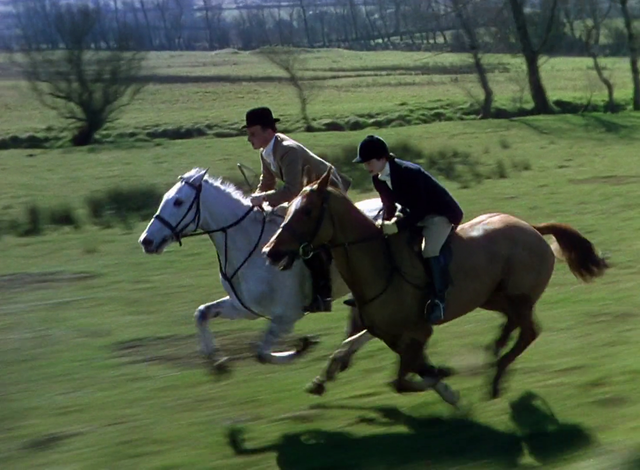
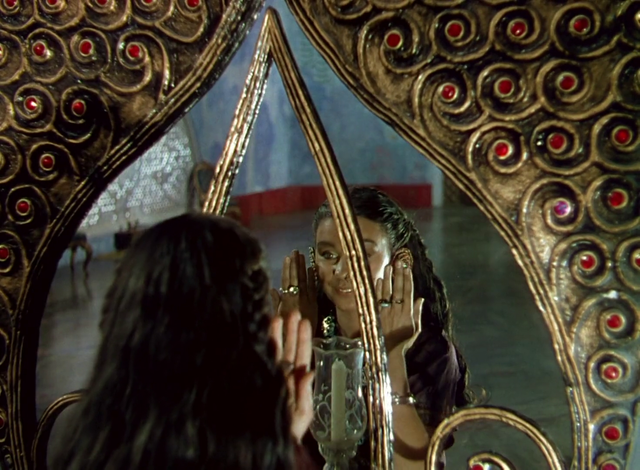
So what do we have here? We have an ideal of a controlled economy. The idealisation is illustrated by it being up towards "the heavens" closer to the world of great ideas in contrast to the ground level Aristotelian logic of Mr. Dean (A man is a man, a child is a child ...). The nuns are a symbol of the matriarchy that has taken over the "government" (which used to be a "brothel" exploiting women anyway). The various nuns are appointed ministries of education and farming and so on and they consider it a "strong" female lead work camp. Check out the "farming" nun in a posture looking over the mountains like a Soviet propaganda poster, with shovel in hand.
The men are either second rate beta males of the indigenous, who are just workers or they are like Mr. Dean (Dean is a term used for a sort of midlevel leader), an attractive alpha male, the otherwise man-rejecting feminists do like to have around since they still like a dominating man to have sex and breed with. And also, boys have to specifically trained to be soldiers .. much like the platonic republic
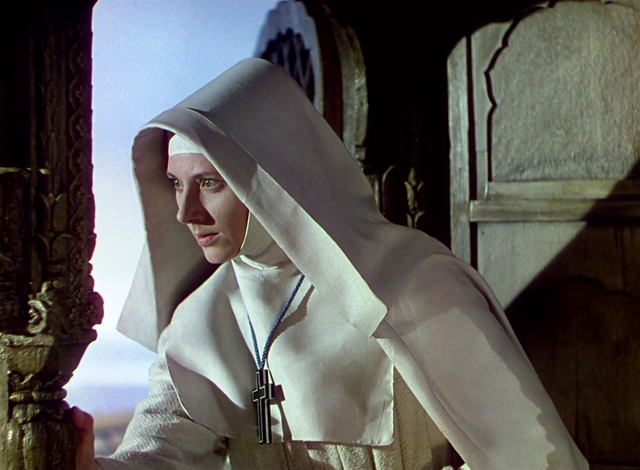
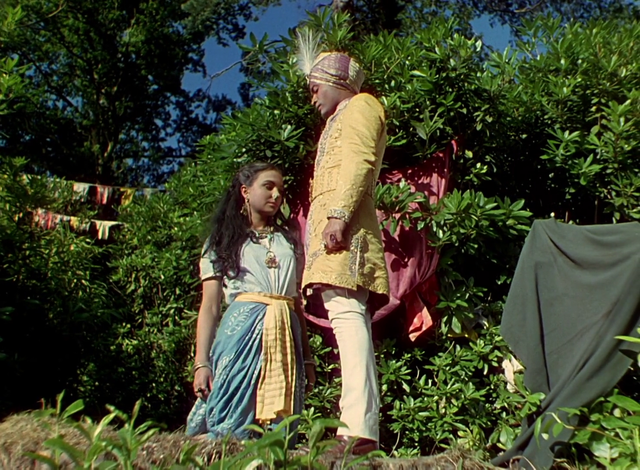
But the inherent manipulative nature of women can never work. They will not accept other women as their leader as women tend to have a care based intuition of morality and that means no other woman, in the long run, can control you or tell you what to do (put a little simplified). It will end up in personal preferences, jealousy over access to alpha males, neglect of duties since "I was not made for manual labor" and so on.
Therefore a feminist government is bound to fail. The ideal for the feminisation of the west is that women are so much more caring and moral that men - but in the end, it will all crumble as women will only care for their own needs as long as they can get away with it. Or else they will be destructive and vengeful and destroy everything around them. Therefore the Monastery is abandoned once more.
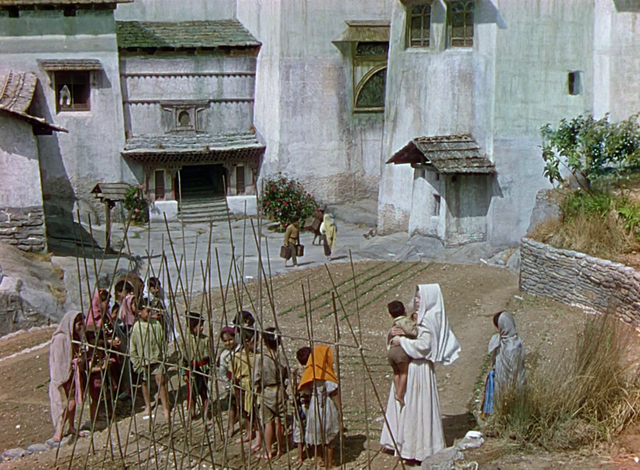
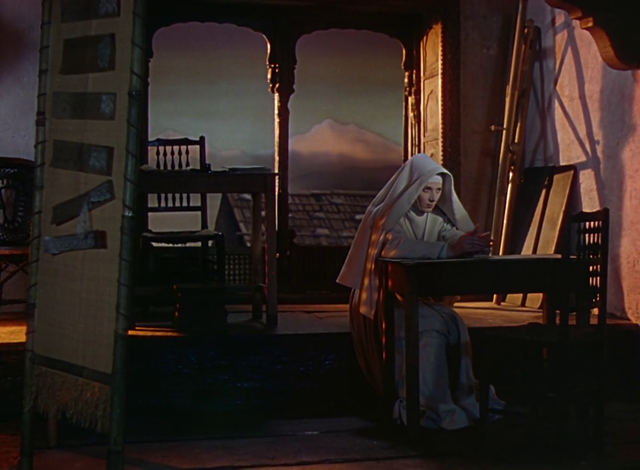
This is visually a glorious movie. It probably is the most visually stunning for its time period and the cinematography is pretty much pure perfection. And more impressive is the fact it was all shot somewhere in Britain. The huge vistas shown in the movie over the Himalayas were matté paintings, stitched together with standard footage. it is an example of an extended use of matté´s and it works pretty flawlessly. Astonishing for a 70 year old movie.
The direction of the acting is another thing. At times it feels rather uninspired, particular scenes with Mr.. Dean. But this has much to do with how the male figure had to be portrayed, both as a cynic/nihilist and a "been there, done that" kind of worldly figure.
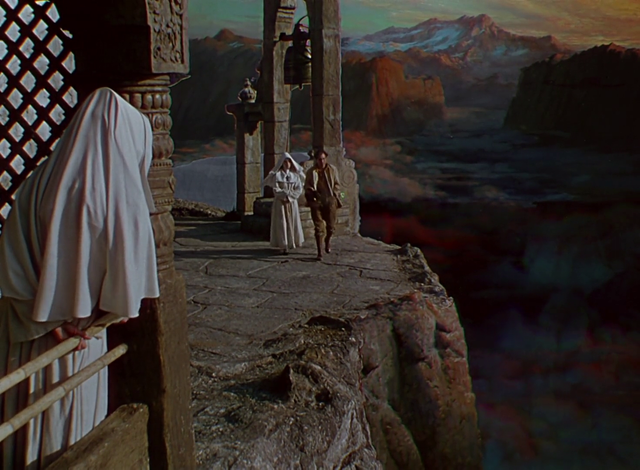
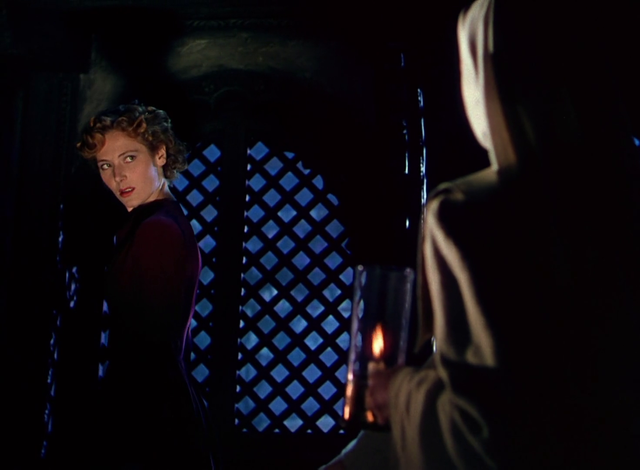
Sister Ruth, played by Kathleen Byron, is pretty astonishing. I was genuinely shocked by the transformation she made from a virtuous Nun to a devilish, man eater in heat over a few minutes. Colours are used to full effect here to portray her state of mind and erotic desires. You could even say it is a bit overacted, but I do find it fits well as an extension of the growing madness you see in her eyes leading up to that point.
All in all this is a near masterpiece, certainly a milestone in cinematography. The stories told are also quite good and works best seen as analogies and metaphors for more important aspects of our world. You owe yourself to watch this movie at least once in you life and if for nothing else, just for the spectacular visual experience it is.
9/10
Saw this on remastered HD on Youtube. Got taken down quickly. I was lucky.
A must see movie! They don't make movies like this anymore.
They certainly don't :-)